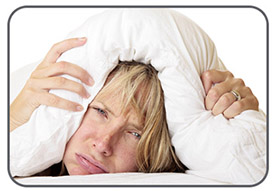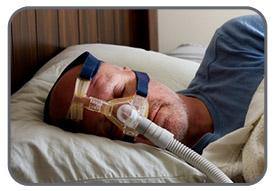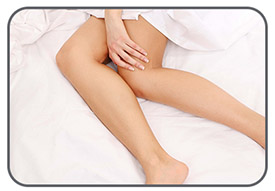How to Effectively Deal with Diabetes Associated Sleep Disorders

Whether you have diabetes, are wondering if you do or if you're trying to avoid it, you should know that diabetes and sleep problems go hand in hand. The reasons for this vary. For type 1 diabetes sufferers, rapidly changing glucose levels during sleep cause an interruption in the sleep cycle. Type 2 diabetes sufferers generally have interrupted sleep due to obesity and sleep disorders associated with obesity, such as sleep apnea. Other sleep issues associated with diabetes include restless leg syndrome, depression, insomnia, peripheral neuropathy and high/low blood glucose levels.
Here is a more detailed look at a few of those sleep disorders and tips to deal with them. These tips will help you either avoid diabetes (by getting the appropriate rest your body needs to function properly) or keep it better under control if you’ve already been diagnosed.
Insomnia

Insomnia can be classified in different ways: difficulty in going to sleep, difficulty staying asleep, or waking up around dawn but then having the inability to sleep later that night. Aside from insomnia being downright annoying it can be difficult to deal with the common effects it brings about – like general grogginess, feeling cranky and having trouble concentrating during the day.
Insomnia tips to help you fall asleep:
- Stick to a schedule. Wake up and go to bed at the same time every day, even on the weekends
- Stay away from caffeine after lunch and sugar closer to bedtime
- Keep your bedroom for sleeping. Put away your cell phone, computer and turn off the TV when you're in bed
- Grab your RunPhones® and get regular exercise
- Meditate daily using your SleepPhones®
- Use your SleepPhones® to listen to soothing music or binaural beats
Sleep Apnea 
Sleep Apnea can be a contributing factor or a symptom of diabetes as well. It occurs when breathing stops during sleep and is one of the most common sleep disturbances people suffer from. Some symptoms are snoring, waking up numerous times throughout the night and feeling irritable and tired during the day. If you think you might have sleep apnea, see your doctor immediately. Some risk factors for sleep apnea are obesity, smoking, nasal or sinus problems.
Some treatments to help with sleep apnea are:
- The use of a CPAP machine which forces oxygen into your throat, keeping breathing passageways open
- The use of an oral appliance which pulls the bottom jaw forward, opening the breathing passageway
- Behavioral treatments such as losing weight and quitting smoking
Restless Leg Syndrome

Restless Leg Syndrome is an uncomfortable feeling in the legs (or even the arms) such as an ache or twitching. These feelings usually go away with movement, therefore the afflicted are continually moving around and unable to sleep.
To ease the discomfort of restless leg syndrome try the following:
- Reduce stimulants such as caffeine, cigarettes and alcohol
- Stretch your legs - especially before bed
- Grab your RunPhones® and exercise regularly
- Speak with your doctor about medicines you may be taking that could be causing your symptoms
"Wow, wow, wow! I just had the best sleep ever! Your sleep PJ's are the best thing that have been invented. Thank you, thank you! It can take me two hours at night to get to sleep — really it can! I had just received the SleepPhones in the mail and I wanted to try them. I put them on and you don't even know you have anything on your head! So very comfortable - soft, very soft." - Marjory K.
According to dLife.com, "As many as 70 million Americans may be affected by chronic sleep loss or sleep disorders." If you are one of them, see your doctor, practice good sleep hygiene and get the recommended 7-9 hours of sleep each night to help you stave off or deal with diabetes.

